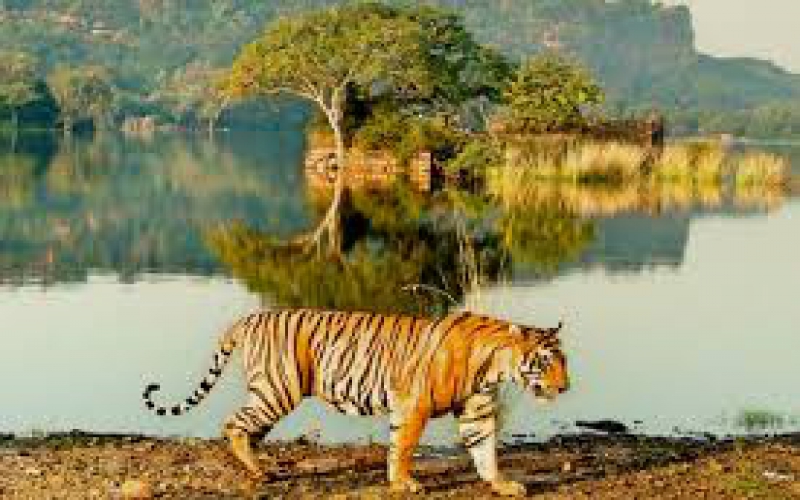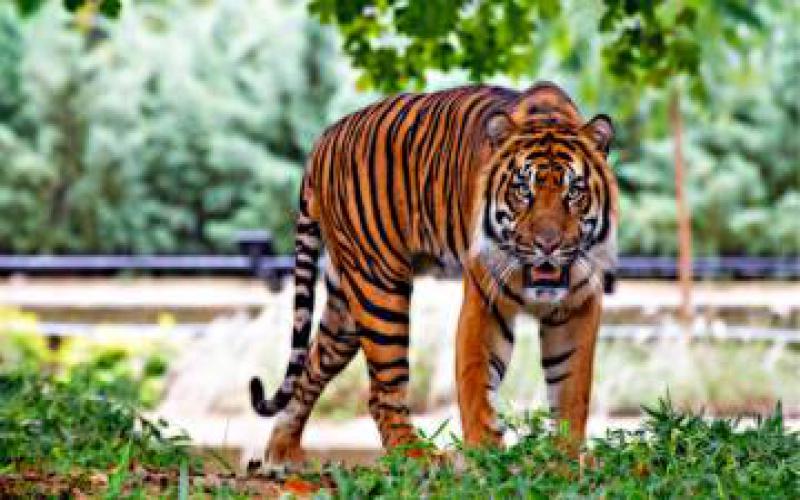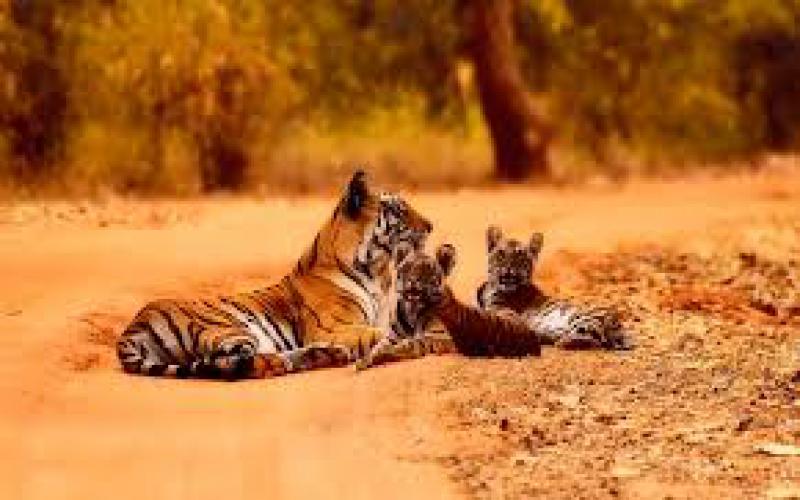India Wildlife Tiger Tour



Duration - 12 Nights / 13 Days
Price -
Destination -
DAY 1 : Day 1 Delhi |
| TTS REPRESENTATIVE will receive you on arrival at the airport and receive you. Transfer to your hotel. Relax. DELHI, India’s capital is a city built in layers. Over millennia, with the city as epicenter, great empires have risen and fallen, one built atop the remains of another. Consequently, countless ruins and monuments dot the city, each with a story to tell. Alongside, New Delhi’s wide multi-lane motorways, bustling with shopping malls, fast cars and steel and glass office complexes, belong unmistakably to the 21st century. Proceed for the sightseeing of Old Delhi. The tour begins with Raj Ghat, the memorial to Mahatma Gandhi. The shrine is a simple black stone structure with an eternal flame burning at one end, a fitting tribute to a humble man who changed the world with nothing but the power of ideas. Red Fort: The imposing red sandstone structure was commissioned by the Mughal Emperor Shah Jahan in 1639, and remained seat of the empire for the next two centuries. Today, the Prime Minister of the India delivers his Independence Day speech to the nation from its ramparts. A rickshaw ride takes us to Jama Masjid, one of Asia’s largest mosques. We shall view this magnificent structure from outside, its lofty domes and minarets reminiscent of a scene from the Arabian Nights. Overnight will be at Delhi |
DAY 2 : Day 2 Ranthambhore |
| Early morning you will be transferred to the railway station to board train for Ranthambhore…packed breakfast will be provided. Ranthambhore Tiger Reserve, at the junction of the Aravalis and the Vindhyas, is a unique example of natural and historical richness, standing out conspicuously in the vast, arid and denuded tract of eastern Rajasthan, barely 14 kilometers from Sawai Madhopur. Get in tune with nature for a luxury holiday in the heart of the jungle. Most of the resorts are close to the National Park Gate, Tiger Den being the closest. It spreads over a highly undulating topography varying from gentle to steep slopes; from flat topped hills of the Vindhyas to the conical hillocks and sharp ridges of the Aravalis, from wide and flat valleys to narrow rocky gorges. An important geological feature the ‘Great Boundary Fault’ where the Vindhya plateaus meet the Aravali Hill range meanders through the Reserve. The National Park is bound by the rivers Chambal in the south and Banas in the north. Tiger, at the apex of the food chain, lord over the kingdom in a subtle way. Solitary by nature, it operates in stealth. Therefore tiger sightings, frequent as they are, are always a matter of chance. However, even evidences of tiger's activities are very exciting. Reach Ranthambhore and check into the hotel. Spend evening in leisure. Overnight will be at Ranthambhore. |
DAY 3 : Day 3 Agra |
| Proceed to Agra. Reach and check into the hotel. AGRA: Two great Mughal monarchs, Akbar and Shah Jahan, transformed the little village of Agra into a befitting second capital of the Mughal Empire - giving it the name Dar-ul-Khilafat {seat of the Emperor}. Today a visitor to Agra is caught up in a world of contrasting edifices, of red sandstone and white marble, narrow galleys and quaint buggies, and that irresistible charm that this favorite city of the Mughals still retains. It is not surprising, that modern Agra still reflects its Mughal heritage most conspicuously. Enjoy the sightseeing of Agra Fort & Baby Taj. AGRA FORT – The red sandstone structure is surrounded by chahar-bagh, a four-square formal garden. Built by the famed Mughal emperor Akbar in 1565 AD, the fort is predominantly of red sandstone. Ensconced within is the picture perfect Pearl Mosque, which is a major tourist attraction. It lies on the bend of the river Yamuna, almost in the heart of the town. Akbar built it as his citadel over the years 1563-73 in the finest architectural style. It has imposing gates and walls of red sandstone and a moat. After Agra Fort we will visit BABY TAJ or the ITMAD-UD-ULLAH – The interiors of which are considered better than the Taj. One of the most beautiful Mughal tombs, Itmad-Ud-Daulah's Tomb was built by Nur Jahan, the Empress of Jahangir for her father in 1628. The tomb is a resting place of the powerful personality in Mughal Court, Itmad-Ud-Daulah, whose life is very interesting. Formerly a very poor Persian merchant then named Mirza Ghiyas or Ghiyas Beg he became a minister and a trusted treasure in Akbar's court. After Akbar's death in 1605, his son Jahangir rose into power. Jahangir made Ghiyas Beg his chief minister and honored him with the title of Itmad-Ud-Daulah, the Pillar of State. Later, Jahangir met a beautiful daughter of Ghiyas Beg named Mehr-Un-Nissa and married her. Mehr-Un-Nissa soon played a significant role in the Jahangir's court and was called Nur Mahal, the light of the Place. Owing to her influence, her father and brother were granted with privileges in the court. When Ghiyas beg (Itmad-Un-Daulah) dies in 1622, Nur Mahal decided to build a mausoleum for him. Queen Mumtaz Mahal or the lady of the Taj was also from this prevailing family. The mausoleum is entirely made of white marble and graced with intricate decoration of inlay work, and marble-screen work belonging to the Islamic style. With its tranquil, small garden on the bank of Yamuna River, the tomb stands impressively elegant from a distance. Proceed for a HERITAGE WALK to the other side of River YAMUNA with your guide. The other side of the TAJ MAHAL across the river Yamuna where Mughal History has been written in edicts of stone, the river Yamuna lined with the residences of mobility was the artery, the very lifeline, which fostered the development of Mughal Agra. These heritage relics have been weaved together for a historic experience of Mughal Agra. You would walk through the various monuments in midst of rural setting intertwined with the communities along with stunning view of the TAJ MAHAL. Enjoy the extended hospitality of the local villagers sipping a cup of Masala Chai on the Tea Terrace with standard, comfortable, clean, affordable, and safe facilities. The whole village walk through India’s Mughal History and amiable people is an unforgettable experience. |
DAY 4 : Day 4 Overnight train to Katni |
| Overnight will be on the train. |
DAY 5 : Day 6-8 Bandhavgarh |
| Reach Umaria and drive to Bandhavgarh. Reach and check in at the resort. Bandhavgarh is a new National Park with a very long history. Set among the Vindhya hills of Madhya Pradesh with an area of 168sq miles (437sq km) it contains a wide variety of habitats and a high density of game, including a large number of Tigers. This is also the White tiger country. These have been found in the old state of Rewa for Many years. Maharaja Martand Singh captured the last known in 1951. This white Tiger, Mohun is now stuffed and on display in the Palace of Maharaja of Rewa. Prior to becoming a National Park, the forests around Bandhavgarh had long been maintained as a Shikargah, or game preserve of the Maharaja of Rewa. The Maharaja and his guests carried out hunting – otherwise the wildlife was well protected. It was considered a good omen for Maharaja of Rewa to shoot 109 tigers. His Highness Maharaja Venkat Raman Singh shot 111 Tigers by 1914. Where birds are concerned, keep a look out for white browed fantails, steppe eagles, green pigeons, grey Malabar hornbills, black and white Malabar hornbills (quite a rare sighting), blossom headed parakeets, parakeets, blue bearded bee eaters, green bee eaters, white bellied drongos, owls, Jerdon's and gold fronted leaf birds, minivets, woodshrikes and the lovely paradise flycatchers. Enjoy afternoon game drive. Spend evening in leisure. Overnight will be at Bandhavgarh. |
DAY 6 : Day 9-11 Kanha |
| Breakfast will be at the hotel. Drive to Kanha. Reach and check into the hotel. This is the place that has been described by RUDYARD KIPLING in his great book "The Jungle Book". Located in the Mandla district of Madhya Pradesh, Kanha National Park is a tiger reserve that extends over an area of over 940 square km. A horseshoe shaped valley bounded by the spurs of the Mekal presents an interesting topography. Steep rocky escarpments along the edges offer breath-taking views of the valley. Realizing the danger on the Tiger population in the country, the Government started the "Project Tiger" at Kanha and in 1974 the area was declared a Tiger reserve. The park is also the habitat of the high ground Barasingha. In 1930s, the Kanha area was divided into two sanctuaries - Hallon and Banjar of 250kms to 300kms each. Though one of these was subsequently disbanded .The area remained a protected one until 1947. Depletion of the tiger population in the year that followed led to the area being made an absolute sanctuary in 1952. Patient watching should reward the visitor, with a sight of Indian Fox, Sloth bear, Striped hyena, Jungle cut, Leopard, Mouse Deer, Chausingha or four horned antelope, Nilgai, Ratel and Porcupine Kanha has some 200 species of birds. Watchers should station themselves in the hills, where the mixed and bamboo forests harbour many species and in the grassy forest clearings. Water birds can be seen near the park’s many rivulets and at Sarvantal, a pool that is frequented by water birds and the area in front of the museum. The birds comprise of Racket Tailed Drongo, Crested Hawk Eagle, Crested Serpent Eagle, Peacock, Golden Oriole, Treepie, Whitenecked Stork, Shikra, White-eyed Buzzard, Roseringed Parakeet, Shama, Red Munia, Large Green Barbet, Crimson Breasted Barbet, Lesser Golden Backed Woodpecker, Hair Crested Drongo, Common Teal, Pintail Duck, etc. Overnight will be at Kanha. |
DAY 7 : Day 12 Delhi |
| Breakfast will be at the hotel. Today, you will be driven to New Delhi, built by the British in the 1930s as their imperial capital. Majestic government and administrative offices line its wide, tree-lined avenues. Named after Sir Edwin Lutyens who was commissioned to design the city in 1911, this part of the city is also known as Lutyen’s Delhi and is a striking contrast to the old city. The red sandstone arch of India Gate, memorial to Indian and British soldiers who laid down their lives in World War I, leads us to the Parliament House, the magnificent seat of the world’s largest democracy. We shall also see Rastrapathi Bhawan, the Indian President’s official residence. Inside is the famed Mughal Gardens with its resplendent fountains and manicured lawns. In spring, it opens its doors to the public. The day’s tour ends at the Qutub Minar. Built in 1193 by Qutubuddin Aibak, a slave general, it is the tallest stone tower in India and marks the site of the country’s first Muslim kingdom. The iron tower in a square opposite is unique in that it never rusts, although it has been exposed to the elements for centuries. Also visit Humanyun’s tomb. Visit the lotus-shaped Bahai temple south of Delhi. An ideal place for meditation, this Bahai House of worship is open to people of all religion. In evening, enjoy Blessedness of the Sufis – This experience takes you to a little mohalla (neighborhood) in Delhi called Dargah Hazrat Nizamuddin. Here you will be introduced to Sufism, a mystical version of Islam, and its teachings of Ishq (love), Aql (intelligence) and Ilm (knowledge). You will walk the ancient crowded alleys to explore monuments and sites associated with famous Sufi saints including Nizamuddin Aulia, Amir Khusrau and Mirza Ghalib. Finally you will enjoy Sufi music concert called a qawwali. Overnight will be at Delhi |
DAY 8 : Day 13 Back Home |
| Enjoy morning game drive. Come back and have breakfast. Later drive to Jabalpur airport to take flight for Delhi Reach and check into the hotel. Relax and as per the international flight timings, you will be transferred to the airport to take flight back home with sweet memories of the Indian Wildlife. |
Inclusion
Does Not IncludeNotes
|
 Rickshaw ride at Old Delhi.,
Rickshaw ride at Old Delhi.,